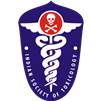Demographic and Clinical profile of Acute Zinc-phosphide poisoning in a south Indian tertiary care Hospital: a five-year retrospective study
Keywords:
suicide attempt; zinc phosphide; poisoning; emergency department; fulminant hepatic failureAbstract
Aim: To predict the clinical & demographic profile of patients who presented to a tertiary centre in southern India with zinc Phosphide poisoning.
Material and Methods: A retrospective cross-sectional analysis of all acute zinc phosphide poisoning cases who presented to our emergency medicine department within January 1st 2010 to June 30th 2015 was done.
Results: The average age of the cases was 23.6 years. 53.34% were female and 35.55% of total cases were married. Out of 45, 88.88% took the product in an attempt of suicide and the rest 11.11% ingested it accidentally. Of the 40 suicide attempts, 15.5% had previous history for suicide attempts. All patients had nausea & vomiting as initial symptoms, while 60% had breathlessness & 48.88% had abdominal pain too. All patients had tachycardia as a common sign while 75% cases also had tachypnea. 75% patients developed bleeding manifestations & 53.33% had encephalopathy during the course. 64.4% had hypotension needing inotropic support. Renal failure was seen in 48.8% cases. Within 72hours 60% of cases had high anion gap non-compensated metabolic acidosis. Of the 33.33% subjects who had an elevation of SGOT/SGPT within 24hrs of ingestion, 53.33% died while 46.67% required liver transplantation.
Conclusion: Although it is a rare form of suicide attempt, the mortality rate (46.66%) we got was high. In most patients alteration of SGOT/SGPT values was apparent only after 72hrs of ingestion & mortality is high in those who showed an elevation within 24hrs. Patients developing severe hepatic failure, increased INR, hypotension, encephalopathy and metabolic acidosis had high mortality rate.



